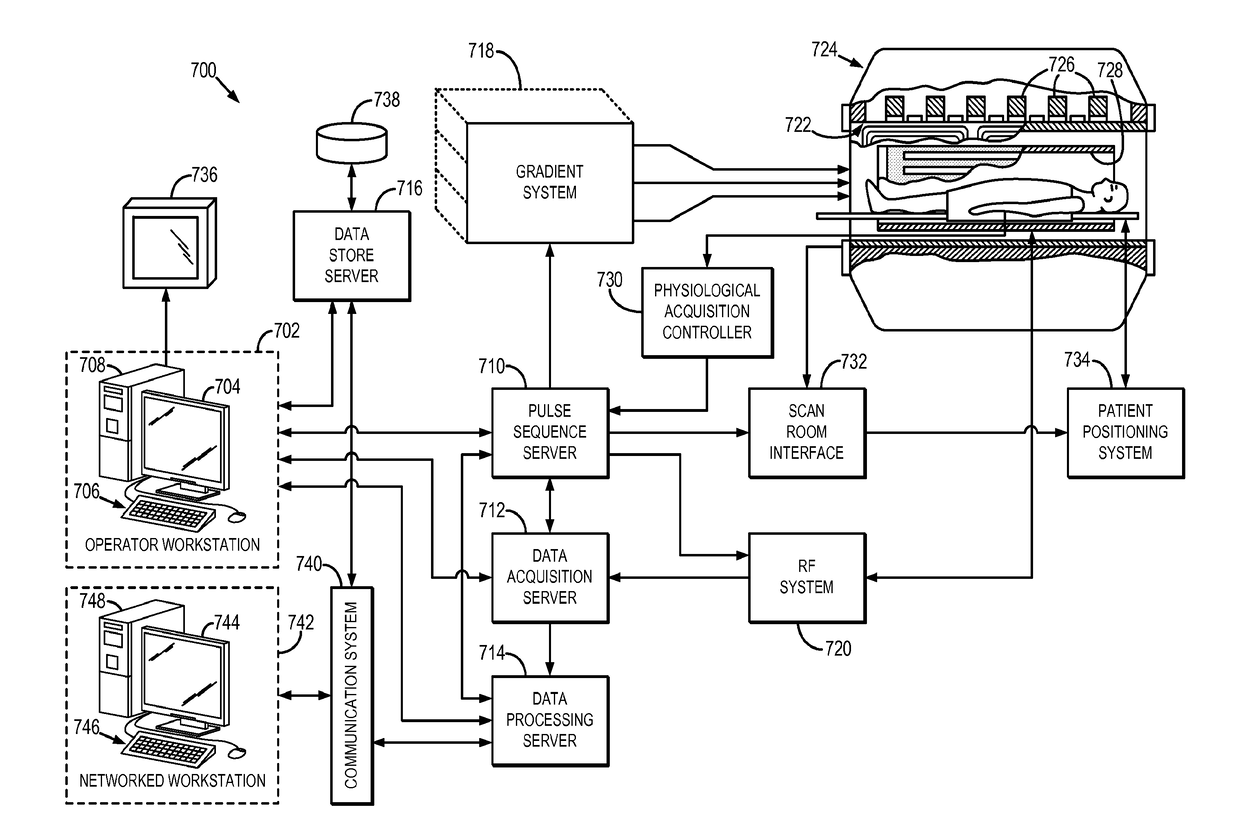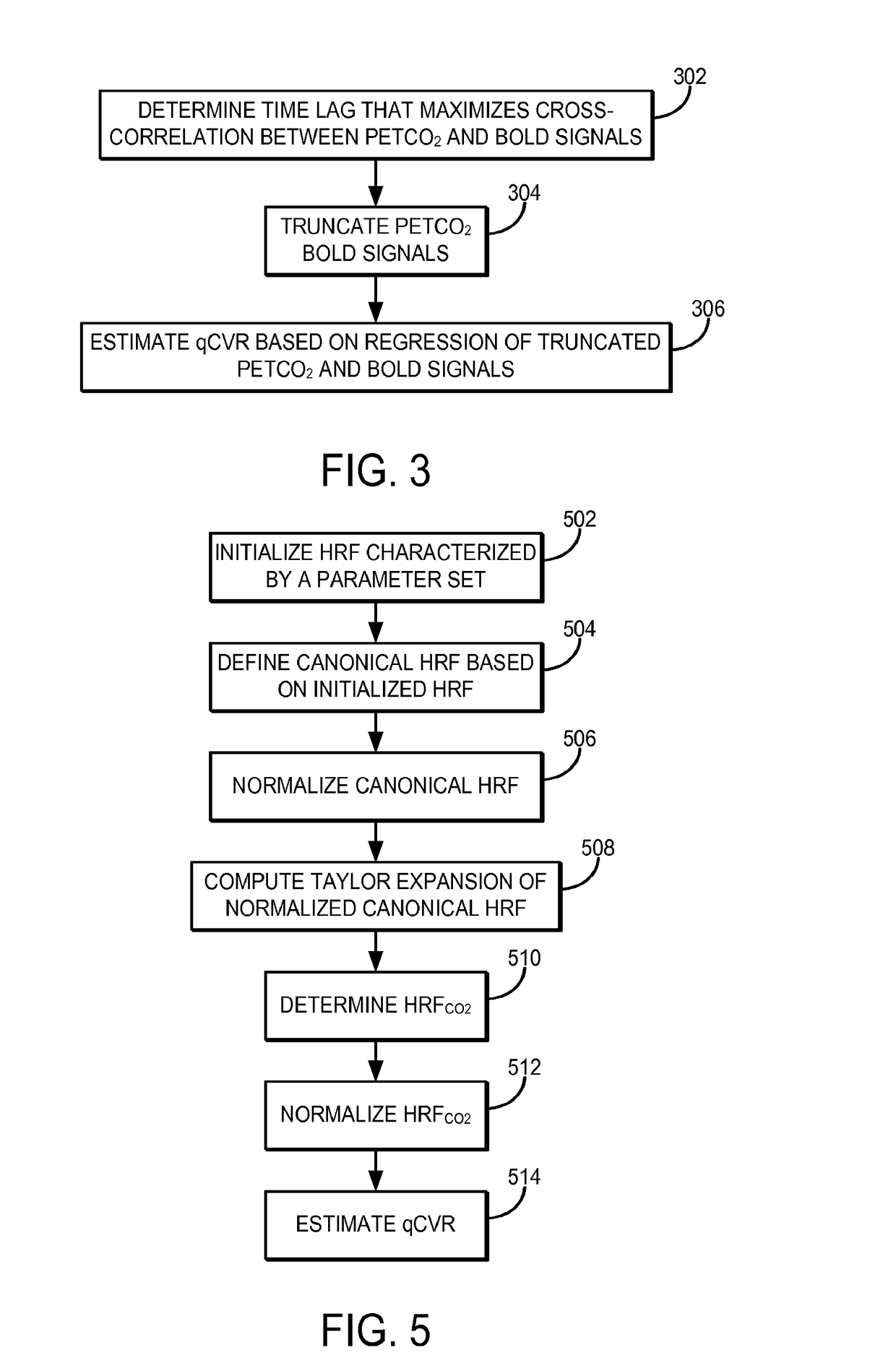Quantitative mapping of cerebrovascular reactivity using resting-state functional magnetic resonance imaging
a functional magnetic resonance and quantitative mapping technology, applied in the field of quantitative mapping of cerebrovascular reactivity using resting-state functional magnetic resonance imaging, can solve the problems of inconvenient cvr measurement for those with severe disease risk, increased risk of stroke and transient ischemic attack, and impaired cvr impairmen
- Summary
- Abstract
- Description
- Claims
- Application Information
AI Technical Summary
Benefits of technology
Problems solved by technology
Method used
Image
Examples
Embodiment Construction
[0025]Described here are systems and methods for estimating a quantitative measure of cerebrovascular reactivity (“CVR”) from data acquired using resting-state functional magnetic resonance imaging (“fMRI”).
[0026]The increasing prevalence of cerebrovascular diseases represents a serious burden for healthcare, and highlights of the importance of regularly monitoring cerebrovascular health in those at risk of disease. One of the most valuable indicators of cerebrovascular health is CVR, but CVR is conventionally only obtainable using invasive vasoactive agents or respiratory challenges, making clinical implementation challenging. In response, the systems and methods of the present disclosure provide a technique to assess CVR based solely on resting-state fMRI data. Exploiting the effect of intrinsic respiratory variability on the rs-fMRI signal, the systems and methods of the present disclosure eliminate the need for vascular agents or task challenges. Thus, the systems and methods of...
PUM
 Login to View More
Login to View More Abstract
Description
Claims
Application Information
 Login to View More
Login to View More - R&D
- Intellectual Property
- Life Sciences
- Materials
- Tech Scout
- Unparalleled Data Quality
- Higher Quality Content
- 60% Fewer Hallucinations
Browse by: Latest US Patents, China's latest patents, Technical Efficacy Thesaurus, Application Domain, Technology Topic, Popular Technical Reports.
© 2025 PatSnap. All rights reserved.Legal|Privacy policy|Modern Slavery Act Transparency Statement|Sitemap|About US| Contact US: help@patsnap.com



